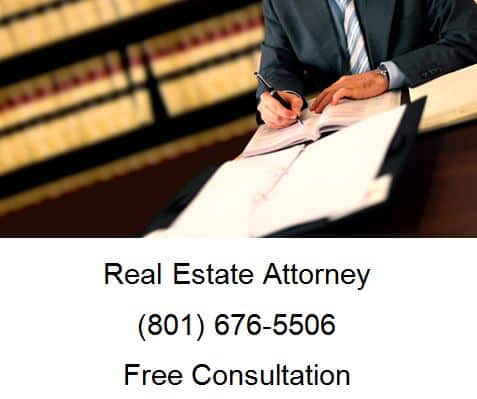Eminent Domain Lawyer
Eminent domain is the right of the government to take private property for public use in exchange for compensation paid to the property owner.
The news that the government is asserting its eminent domain power against your personal or business property may come as a shock.
Utah has some of the strongest private property protections in the country. Property owner in Utah threatened by eminent domain are entitled to attorney representation, and in many cases, the government must pay the owner’s attorney fees. In addition to compensation for the value of your taken property, you may be eligible for business damages, severance damages, and other special damages.
HOW EMINENT DOMAIN WORKS
The government has the right to take your property through an eminent domain proceeding, but this right is not unlimited. Eminent domain rules and procedure, as outlined in Utah state law, must be followed.
Acquiring property through eminent domain is also known as “condemnation.” The condemning authority may be any of the following:
- Federal, state, or municipal government
- Governmental agency (such as the Utah Department of Transportation)
- Public utility company
WHEN PROPERTY MAY BE TAKEN
Condemned property can only be taken for a clear “public use.” While the courts can leniently interpret what constitutes a public use, the term typically covers private land taken in order to build public purpose projects such as:
- Public roads and highways
- Fire and police stations
- Parks and conservation areas
- Schools
- Court houses and other public buildings
- Public infrastructure
Property may also be transferred via eminent domain to a private company providing public works that include:
- Dams
- Railroads
- Waterworks
- Pipelines
- Electricity
- Gas
In the State of Utah, property cannot be acquired through eminent domain to prevent or eliminate public nuisance, slum, or blight conditions.
EMINENT DOMAIN PROCESS
The eminent domain process typically follows these steps:
- The property owner is given notice of the government’s intent to seize their land and is given a settlement offer. For business properties, the government is not obligated to negotiate a settlement.
- The owner has 30 daysto respond to the government’s offer (180 days in the case of a condemned business). If the owner doesn’t wish to sell, or settlement negotiations aren’t successful, the condemning authority files an eminent domain lawsuit.
- A preliminary hearing is held, at which time the property owner may challenge the eminent domain action.
- If the property owner’s challenge is unsuccessful, the eminent domain action moves forward, and a jury trial is held to determine the full compensation for the property, plus any additional damages the owner is entitled to. Either side may appeal the jury’s final decision.
INVERSE CONDEMNATION VS. EMINENT DOMAIN
The government does not always follow eminent domain procedure. In some cases, the government takes private property without declaration and without compensating the owner.
When condemnation does not occur in accordance with eminent domain law, the owner may seek a court order declaring that a taking has occurred and, if the order is granted, the owner can then receive just compensation for their condemned property.
Inverse condemnation actions are not limited to physical takings of property. Inverse condemnation can also arise due to a “regulatory taking,” which occurs when the government passes a regulation that restricts a property owner from deriving an economic benefit from their property. Regulatory takings most commonly occurs through zoning ordinances and development restrictions.
In addition, physical takings may take the form of property rights restrictions, such as access restrictions.
BUSINESS OWNERS AND EMINENT DOMAIN
Utah business owners whose property is taken via eminent domain may be able to recover additional damages associated with the taking, including:
- Loss of profits and productivity
- Loss of goodwill
- Costs related to moving and selling equipment
- Costs related to obtaining a replacement property and building a replacement facility
Business damages are not specifically defined under Utah law—and are ultimately decided by a jury and based on sound accounting principles and legal arguments.
Whether you own the condemned commercial property or operate a business on the property as a tenant, eminent domain business damages may be available. However, in order to qualify for business damages, the following conditions must generally be met:
- Less than the entire property is sought (business damages aren’t available in total takes)
- The condemning authority is a public body (not a utility company)
- Condemnation is sought for right-of-way
- The business has been established for at least 5 years on land adjoining the condemned property
The condemning authority is not obligated to make the business owner an initial offer for business damages. It is incumbent upon the business owner, after receiving an eminent domain notice, to submit a written initial offer of business expenses, along with the required documentation, within 180 days. Missing this deadline can result in the loss of a business damages claim.
In the event that you don’t quality for business damages, severance damages—measured by the reduction in value of any remaining property—may be recoverable.
Free Initial Consultation with Eminent Domain Lawyer
If you need help with an eminent domain issue, call Ascent Law for your free consultation (801) 676-5506. We want to help you.
8833 S. Redwood Road, Suite C
West Jordan, Utah
84088 United States
Telephone: (801) 676-5506
Helpful Utah Lawyer Articles
Intellectual Property Litigation



